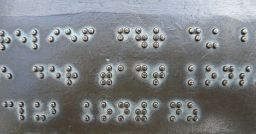
Disability and special needs: the advantages of e-learning

E-learning allows students with disabilities or special educational needs to access a wide range of educational paths. What are the benefits? And what are the tools that allow us to improve the accessibility of online courses?
E-learning has undoubtedly changed habits and increased opportunities for many students all over the world. The possibility of reducing travel, of being able to learn from home and being able to follow courses that do not offer one's own territory, in fact, are just some of the advantages of online courses. However, there is a category, often unjustly forgotten, that can greatly benefit from eLearning. We are talking about students with disabilities or special educational needs.
Not everyone can take courses online because they need to have an individual tutor who follows their step by step. Nevertheless, most students with physical or cognitive disabilities find an incredibly useful tool in online courses because it fits their needs.
The most visible advantage is that concerning travel, especially for students with mobility problems. Schools, both public and private, are not always prepared on a structural level to worthily welcome people with special needs. The same goes for transport vehicles that often turn into a further barrier.
Furthermore, with online courses, each student can organize himself in the way he prefers. Students who suffer from social phobia or language disorders, for example, have the opportunity to follow and participate in the training in ways that put them at ease.
How to create an accessible online course for students with disabilities or special needs?
Here are some tips:
1. Contents accessible in different forms
It is essential that the contents are usable in different ways. In addition to videos and textual content, in fact, we often forget about the importance of audio that can give blind or visually impaired students the opportunity to easily listen to the lessons.
2. Use new technological tools
The technology offers many tools that allow you to make giant steps in this field. For example, we have already spoken of the DynDevice platform which uses Deep-Learning algorithms and DNN (Deep Neural Network). This means, for example, the automatic transcription of the audio present in the videos or audio files, allowing access to the courses even for the deaf.
3. Accessibility of the platform
To be accessible not only the contents but also the platform itself and the design of the course must be accessible. For example, using alt tags for blind users. This function is used to combine each image with a brief description that users can read by passing over the cursor: in this way the content of the image can be heard through the readers for the visually impaired. Or create images with high contrast (alternating dark and light colors) to allow people with color blindness to distinguish the various parts of the platform.
Did you like this article? Sign up for the newsletter and receive weekly news!
Subscribe to NewsletterComments:
No comments are in yet. You be the first to comment on this article!